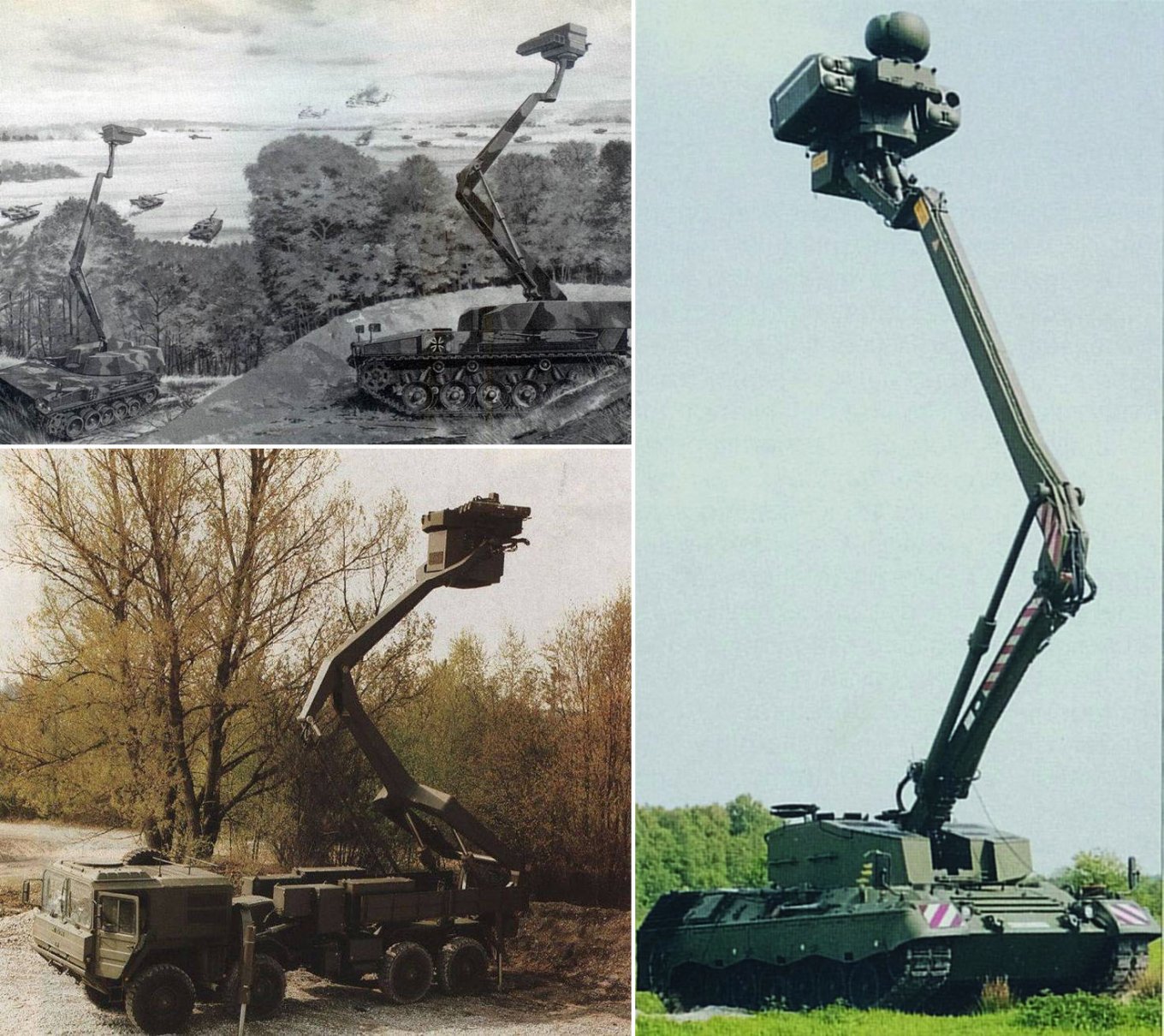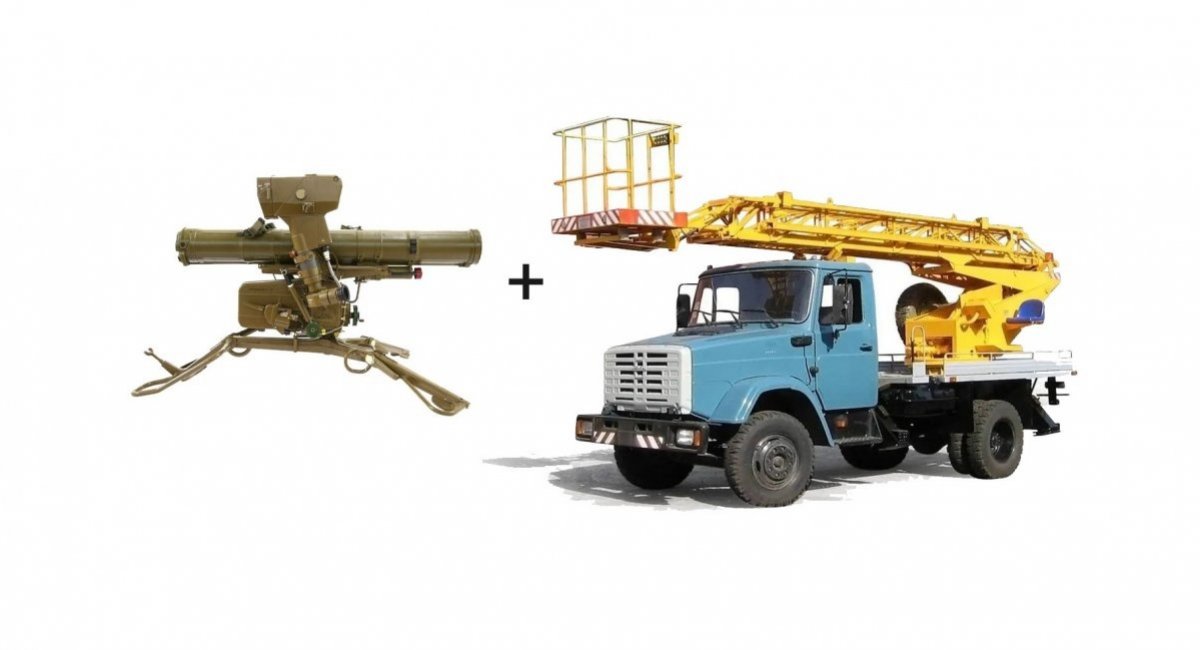A noteworthy video surfaced on the Internet featuring russian soldiers using a civilian telescopic boom lift with an anti-tank missile system installed on the mast, allowing them to elevate the weapon above obstacles for better visibility.
The footage was noticed by BTVT and reminded the editors of a German non-implemented project for mobile anti-tank missile systems on a lift.
Read more: The russian Military Assets are Under Supervision of Ukrainian Partisans in the Occupied Territory
The idea of putting an ATGM with its operator on top of a cherry picker nowadays is surprising indeed. Mostly because during the Cold War, back when the concept originated in Germany, the operational situation on the battlefield was completely different.
At that time, raising an ATGM with, preferably, an unmanned weapon station above the terrain or trees looked quite an interesting option. Surely, the weapon itself was exposed to enemy fire but the personnel was safe.
For example, the Germans wanted to use the HOT missile for that purpose, and the whole invention relied on the fact it was remotely controlled through a wire and it was still necessary to keep the target in the line of sight all the way until the missile hit.

However, with the advent of portable "fire-and-forget" ATGMs like the FGM-148 Javelin and subsequent advancements like the French Akeron MP missile's NLOS (non-line of sight) mode, the landscape of anti-tank warfare evolved.

The real-life experience of combat operations in Ukraine revealed that the use of drones has completely eliminated the "fog of war," and the factor of "battlefield transparency" has become dominant. Be it hiding among the trees or terrain, it doesn't make this massive vehicle any safer.
Read more: "Fortifications Are Good But Defense Also Needs Drones, Artillery and Minefields, as Ukraine's Example Shows"
Moreover, with cheap and expendable FPV drones introduced to modern war, even the smallest infantry units gained NLOS tools featuring attack ranges farther than an ATGM could reach. The only safety factors of portable ATGMs — their inconspicuousness and high mobility — are compromised by the bulky boom lift.
As a result, according to the author, this self-made chimera did not last long on the battlefield.
At the same time, there is another, more promising way to lift ATGMs and use them to a real advantage: to integrate them into aerial drones. This way you get an extremely mobile remotely operated anti-tank weapon.
The British Jackal with Martlet missiles, now promoted by Thales as the Lightweight Multirole Missile (LMM), exemplifies this advancement. These missiles are versatile and can destroy both aerial and ground-based targets, including lightly armored vehicles.
On the other hand, the absence of remote-controlled ATGMs, similar light missiles, and small-sized electro-optical targeting stations in russia prompts such makeshift improvisations with boom lifts.
Read more: Ukrainians Using Experimental Weapons Gives a Boost to Britain's Defense Industry














